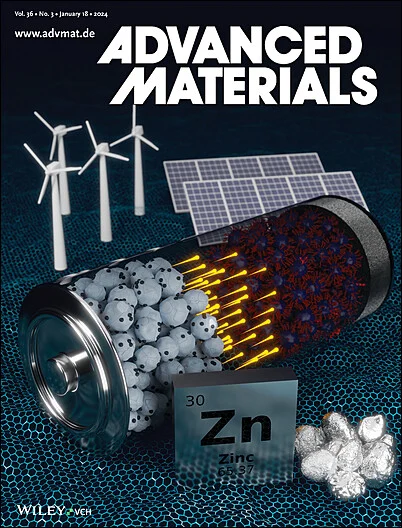Self‐Sustained Biophotocatalytic Nano‐Organelle Reactors with Programmable DNA Switches for Combating Tumor Metastasis
IF 27.4
1区 材料科学
Q1 CHEMISTRY, MULTIDISCIPLINARY
引用次数: 0
Abstract
Metastasis, the leading cause of mortality in cancer patients, presents challenges for conventional photodynamic therapy (PDT) due to its reliance on localized light and oxygen application to tumors. To overcome these limitations, a self‐sustained organelle‐mimicking nanoreactor is developed here with programmable DNA switches that enables bio‐chem‐photocatalytic cascade‐driven starvation‐photodynamic synergistic therapy against tumor metastasis. Emulating the compartmentalization and positional assembly strategies found in living cells, this nano‐organelle reactor allows quantitative co‐compartmentalization of multiple functional modules for the designed self‐illuminating chemiexcited PDT system. Within the space‐confined nanoreactor, biofuel glucose is converted to hydrogen peroxide (H具有可编程DNA开关的自我维持生物光催化纳米细胞器反应器用于对抗肿瘤转移
转移是癌症患者死亡的主要原因,传统光动力疗法(PDT)依赖于局部光和氧应用于肿瘤,因此对其提出了挑战。为了克服这些限制,研究人员开发了一种具有可编程DNA开关的自我维持的模拟细胞器纳米反应器,可实现生物化学-光催化级联-驱动饥饿-光动力协同治疗肿瘤转移。这种纳米细胞器反应器模拟了活细胞中的区隔化和位置组装策略,可以对设计的自光化学激发PDT系统的多个功能模块进行定量共区隔化。在空间受限的纳米反应器中,生物燃料葡萄糖被转化为过氧化氢(H2O2),过氧化氢增强了发光氨基化学发光(CL),从而通过化学发光共振能量转移驱动光化学单线态氧(1O2)的产生。同时,血红蛋白作为葡萄糖氧化和PDT的同步氧供体,同时也表现出类似过氧化物酶的活性来产生羟基自由基(·OH)。关键是,纳米反应器在正常组织中保持关闭,在肿瘤中通过脚点介导的链位移按需激活。这些发现表明,这种纳米反应器在光和氧方面是自给自足的,并且可以精确地打击肿瘤,为治疗高度转移的癌症提供了一个有希望的范例。
本文章由计算机程序翻译,如有差异,请以英文原文为准。
求助全文
约1分钟内获得全文
求助全文
来源期刊

Advanced Materials
工程技术-材料科学:综合
CiteScore
43.00
自引率
4.10%
发文量
2182
审稿时长
2 months
期刊介绍:
Advanced Materials, one of the world's most prestigious journals and the foundation of the Advanced portfolio, is the home of choice for best-in-class materials science for more than 30 years. Following this fast-growing and interdisciplinary field, we are considering and publishing the most important discoveries on any and all materials from materials scientists, chemists, physicists, engineers as well as health and life scientists and bringing you the latest results and trends in modern materials-related research every week.
 求助内容:
求助内容: 应助结果提醒方式:
应助结果提醒方式:


